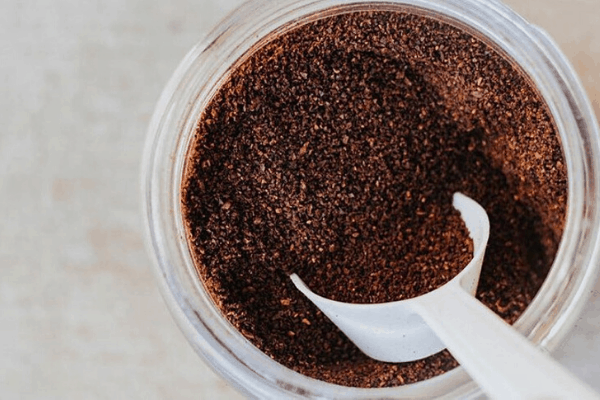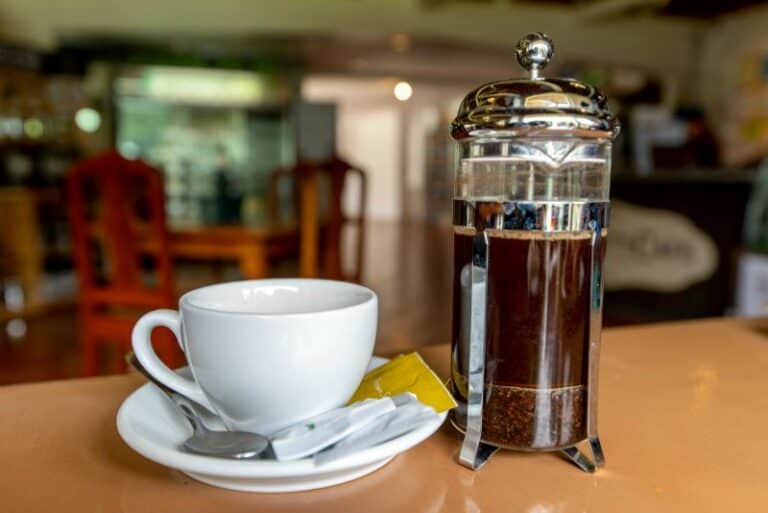Coffee drinkers know the value of an amazing cup of coffee in the morning. Starting off with your favourite coffee beans brewed the way you like it can be the difference between a bad or good day.
More than 50% of North American adults consume coffee daily. Still, many coffee drinkers do not know coffee’s rich and interesting history. This in depth guide will take you through every step of the coffee making process.
The art of coffee can be as simple or as complicated as you want it to be. You don’t need to have a deep understanding of where a coffee is grown or how it’s brewed to appreciate your drink. If you want to learn more about coffee, this is a great starting place.
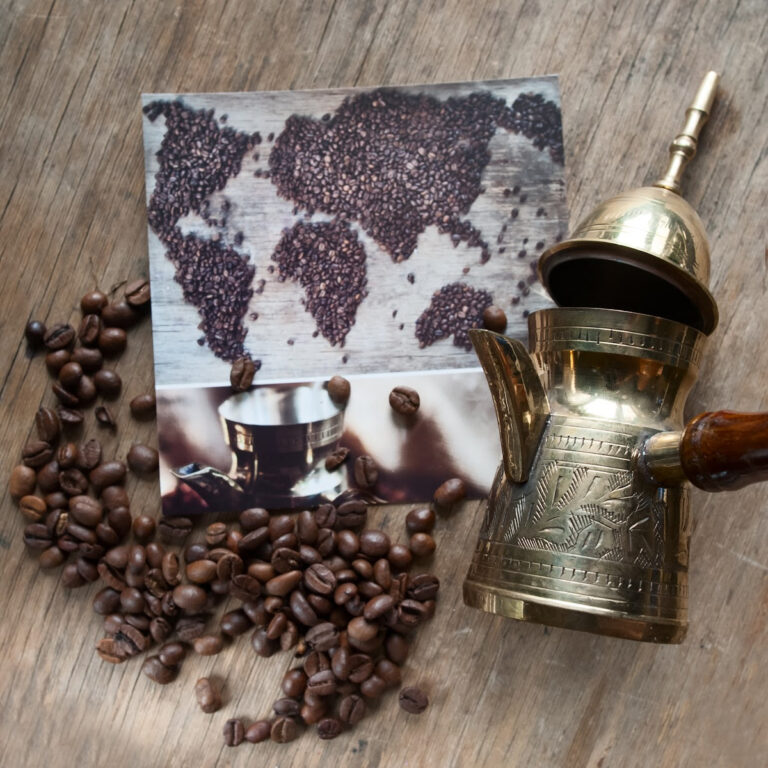
The Legend of Coffee
There’s no way to know how true this legend is, but it’s now set as cannon in coffee lore. Legend has it that there was a young Ethiopian man named Kaldi who has a goat herd. Every day Kaldi would let his goats out to graze and they would return in the evening.
One day as the sun set, Kaldi waited for his goats to return, but they never did. He stayed up all night waiting for them to come back. When the sun rose Kaldi ventured out to find his lost herd. He found them running and jumping around some trees with bright red cherries. Kaldi sampled the cherries and was reenergized after his long night of waiting for his goats.
After this experience, Kaldi reported his discovery to the local monks. The monks experimented with roasting and brewing the beans from the cherries… thus making the very first cups of coffee. Over centuries, coffee has slowly spread across the globe and ended up in your morning cup.
Coffee Varieties
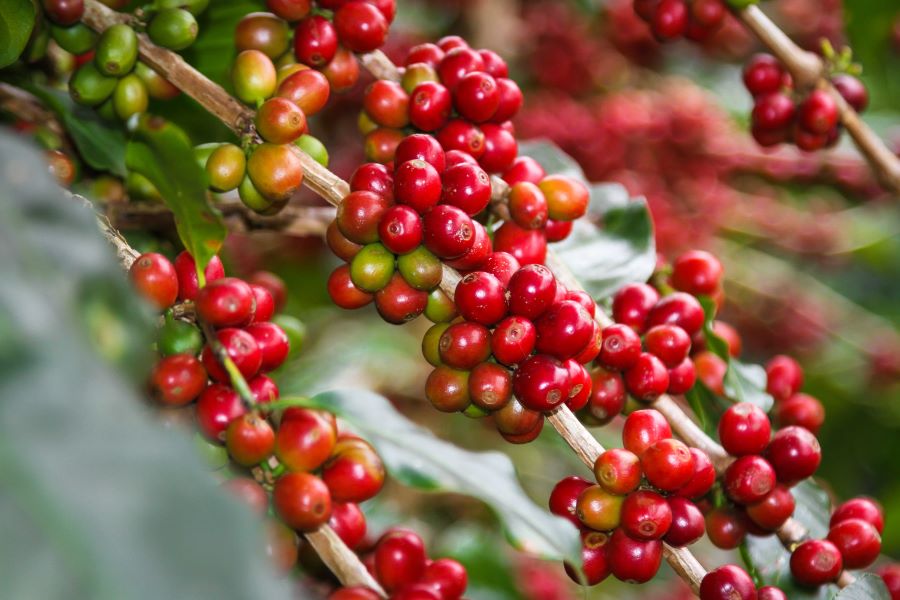
Robusta Coffee Beans
Robusta beans have a shorter growing season, so they produce faster. They also can be grown at a lower altitude, and produce more cherries per plant. The bushes are easy to grow, and resistant to insects and diseases. Robusta makes up approximately 40% of the world’s coffee beans. This is partly because Robusta coffee is easier for farmers to produce. It’s more resistant to rust, less sensitive to insects and has a higher yield. The beans from Robusta plants tend to be about ½ the cost of Arabica beans. They also have more caffeine per bean than Arabica coffee. However, the taste is often stated as harsh and bitter.
Arabica Coffee Beans
Arabica coffee bushes have a longer growing season. This results in harvesting less often, so less crop per bush. Arabica beans grow at higher altitude, and are more susceptible to diseases. Coffee rust is of particular concern for coffee growers, as is climate change. These both contribute to the growing costs as well. Arabica is more preferred by consumers due to the lower caffeine and better flavour. Arabica coffee make up 60% of the world’s coffee beans.
Coffee Growing Regions
Coffee grows best close to the equator between the Tropic of Cancer and the Tropic of Capricorn. This area is often referred to as the “Bean Belt”. The flavour of the coffee varies based on many factors. These include where the plants are grown, the soil, altitude, temperatures and rainfall. The flavours from a bean crop will usually be similar year to year. The more subtle flavours may be slightly different each season.

Central and South American Coffee Beans
Central and South American coffees tend to have subtle tones of chocolate and nuts. These main growing countries include Mexico, Guatemala, Costa Rica, Brazil, and Columbia. We’ve also had coffee from El Salvador and Honduras at Cupper’s. And of course, one of our annual seasonal specialties is from Panama!
African Coffee Beans
African coffees tend to have fruity notes, like a dry wine or dried fruit. The largest coffee growing countries in this region are Kenya, Ethiopia, and Tanzania. We’ve also had coffee from Rwanda, Burundi, Congo and Uganda at Cupper’s in past.
Southeast Asian Coffee Beans
Coffees from Southeast Asia are lower in acidity than other coffees. If coffee upsets your stomach, that’s due to high acidity, so this is a good growing region to try. The flavours are more spicy and smooth. The largest coffee growing country in this region is Indonesia, as well as India and Sumatra. Fun fact: One of the common nicknames for coffee comes from here – the island of Java.
The Cherry and Bean
Coffee beans are the pit of a cherry that grow from a coffee plant. The plants can have buds, flowers, green and ripe cherries all at the same time on the same branch. This makes harvesting and production more challenging.
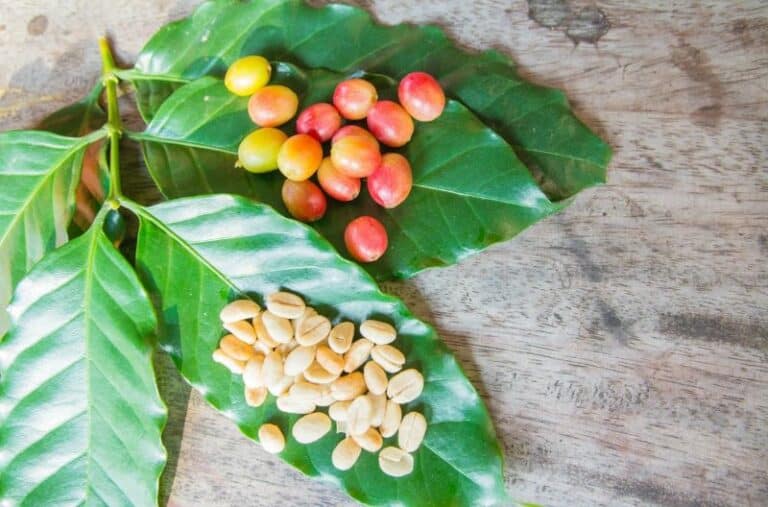
The coffee cherry itself is safe to eat. The outer fruit is sweet and tastes like hibiscus or berries, rather than coffee. The fruit also has some caffeine, which the plant produces as a pesticide to protect itself. The riper the fruit, the sweeter and more balanced the beans will be. Coffee processing removes and discards the fruit pulp.
Usually there are two beans in every cherry. Some plants have only one bean in each cherry. These are Peaberry coffees. Processed green coffee beans have a thin membrane. This membrane isn’t apparent before roasting, and is also called silverskin. This skin comes off during roasting and we discard it as chaff.
Coffee Picking
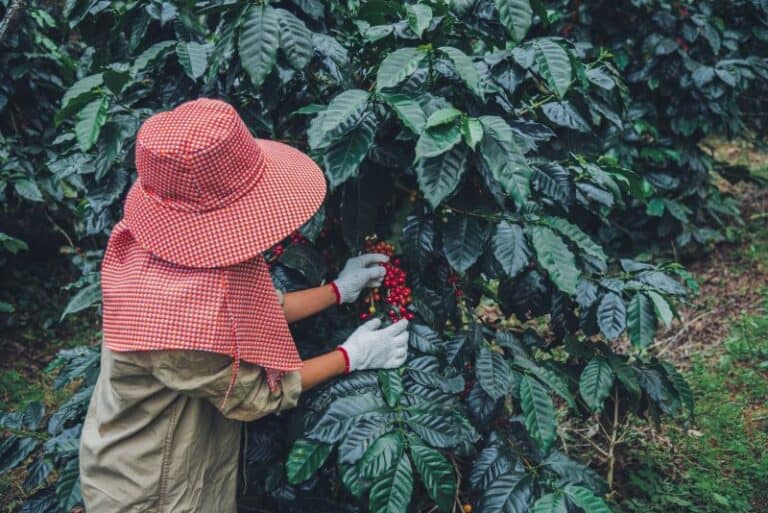
Coffee Processing
Before the coffee gets roasted it needs to be processed into the dry green beans. This involves removing the pit from the fruit and pulp using a variety of methods. Each method has an effect on the sweetness, body, and acidity of the final brewed coffee.
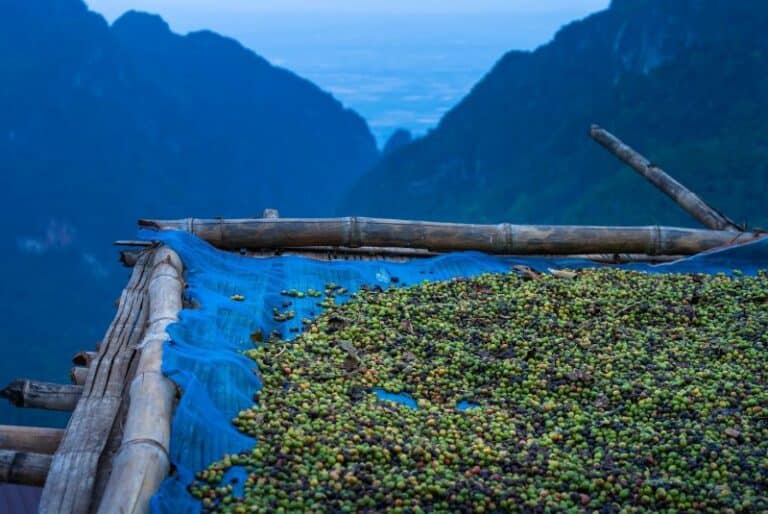
Wet / Washed Processed Coffee
Wet or washed processed uses a large volume of water. Green coffee has the fruit removed after harvesting. Only the parchment skin remains on the bean. The beans get weighed and sorted by size, then added to large fermentation tanks. They stay in the tanks for 12-48 hours. There, natural enzymes in the fermentation tank dissolve the mucilaginous layer. Afterwards, the beans are rinsed and are ready to dry. Mechanical drying finishes in 1-2 days whereas drying in the sun takes 3-16 days.
Eco-pulped processing is very like wet processing, but uses less than a tenth of the water. Thus it’s considered more environmentally friendly than wet-processing.
Dry / Natural Processed Coffee
The dry method of processing coffee is much older and often used in areas where water is less available. The fresh picked cherries are spread out in the sun on large concrete pads. They dry in the sun for many days, sometimes several weeks. Workers rake them several times during the day. This raking helps dry them thoroughly and prevent rotting. The cherries dry until the moisture content is approximately 11%.
Honey Processed Coffee
Honeyed coffee is much less common. With this process, the pulp is removed from the cherries but not rinsed away, and both dry together. These are sub-categorized as yellow, red or black, depending on how much pulp stays with the beans.
Milling the Coffee
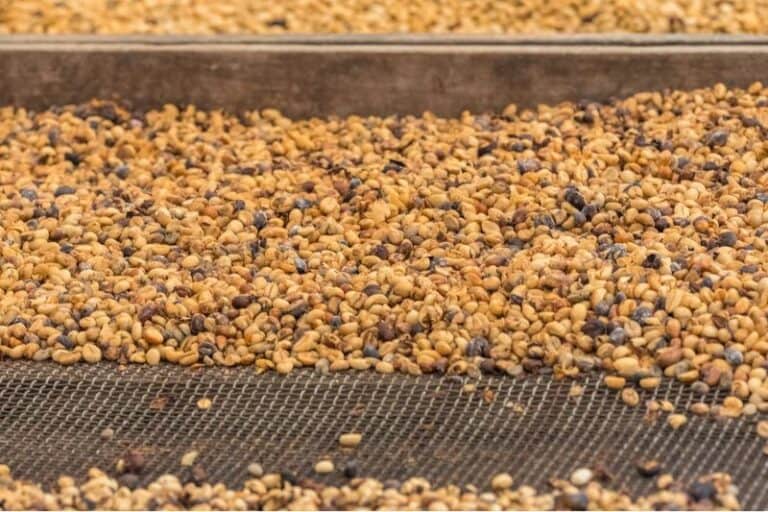
The Finale: Green Coffee Beans

Coffee Roasting
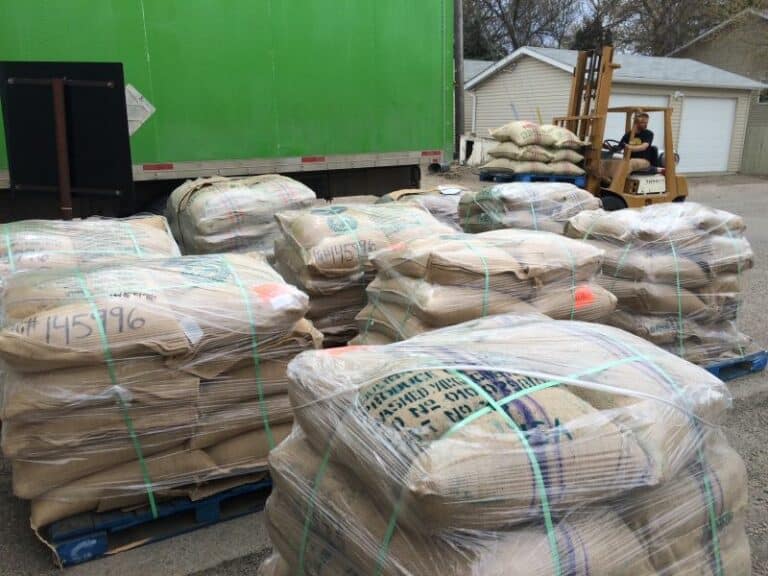
Coffee Strength
Coffee strength means different things to different people. We enjoyed James Hoffman’s explanation in his video essay from 2022. He states that ‘coffee strength’ often describes four completely different aspects of coffee. These include proportion, bitterness, roast, and caffeine content. As a result, the term ‘strength’ actually makes coffee more confusing than it needs to be.
Proportion
Bitterness
Roast
Caffeine Content
Brewing Coffee
Now that the beans have been grown, processed, and roasted… you are almost ready for a cup of coffee. (Finally, right?!) To brew coffee, there are four main concerns: brew time, proportions, grind type, and water.
